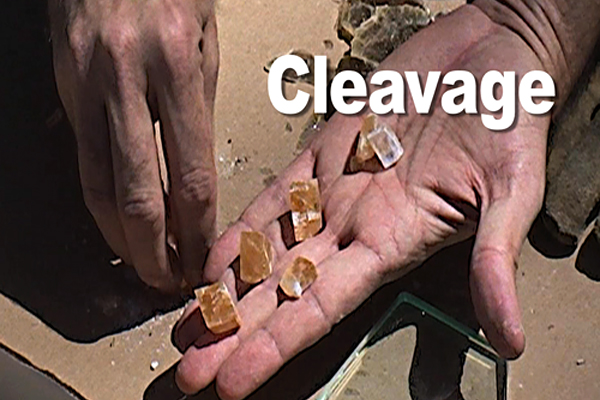Source(google.com.pk)
Define Cleavage Biography
Exmoor is loosely defined as an area of hilly open moorland in west Somerset and north Devon in South West England, named after the River Exe the source of which is situated in the centre of the area, 2 miles NW of Simonsbath. Exmoor is more precisely defined as the area of the former synonymous ancient royal hunting forest, officially surveyed 1815–1818 as 18,810 acres in extent.[1] Even more precisely Exmoor is defined as the remnant of the royal forest of 18,810 acres allotted to the king in 1815, equating to 12/22nds of the total, in acres 10,262 1/4, which was sold to John Knight (1765–1850) in 1818, which comprises the present Exmoor Parish, whose parish church is situated in Simonsbath.[2] The moor has given its name to a National Park, which includes the Brendon Hills, the East Lyn Valley, the Vale of Porlock and 55 kilometres (34 mi) of the Bristol Channel coast. The total area of the Exmoor National Park is 692.8 square kilometres (267.5 sq mi), of which 71% is in Somerset and 29% in Devon.[3]
Contents [hide]
1 Exmoor National Park
2 Geology
2.1 Coastline
2.2 Rivers
3 Climate
4 History
4.1 Establishment of royal forest
4.2 Wardens
5 Wool trade
6 Ecology
6.1 Flora
6.2 Fauna
6.3 Beast
7 Government and politics
8 Sport and recreation
9 Places of interest
10 See also
11 References
12 Further reading
13 External links
[edit]Exmoor National Park
Exmoor was designated a National Park in 1954, under the 1949 National Parks and Access to the Countryside Act.[4] The Exmoor National Park is primarily an upland area with a dispersed population living mainly in small villages and hamlets. The largest settlements are Porlock, Dulverton, Lynton, and Lynmouth, which together contain almost 40% of the park's population. Lynton and Lynmouth are combined into one parish and are connected by the Lynton and Lynmouth Cliff Railway. Exmoor was once a Royal forest and hunting ground, which was sold off in 1818. Several areas within the Exmoor National Park have been declared Sites of Special Scientific Interest due to their flora and fauna. This title earns the site some legal protection from development, damage and neglect. In 1993 an Environmentally Sensitive Area was established within Exmoor.
Exmoor is an upland of sedimentary rocks classified as gritstones, sandstones, slate, shale and limestone, siltstones, and mudstones depending on the particle size. They are largely from the Devonian and early Carboniferous periods (the name Devonian comes from Devon, as rocks of that age were first studied and described here). As this area of Britain was not subject to glaciation, the plateau remains as a remarkably old landform.[5][6] Quartz and iron mineralisation can be detected in outcrops and subsoil.[7] The Glenthorne area demonstrates the Trentishoe Formation of the Hangman Sandstone Group. The Hangman Sandstone represents the Middle Devonian sequence of North Devon and Somerset.[8] These unusual freshwater deposits in the Hangman Grits, were mainly formed in desert conditions.[9] The underlying rocks are covered by moors and supported by wet, acid soil.[10] The highest point on Exmoor is Dunkery Beacon; at 519 metres (1,703 ft) it is also the highest point in Somerset.[11]









Define Cleavage Biography
Exmoor is loosely defined as an area of hilly open moorland in west Somerset and north Devon in South West England, named after the River Exe the source of which is situated in the centre of the area, 2 miles NW of Simonsbath. Exmoor is more precisely defined as the area of the former synonymous ancient royal hunting forest, officially surveyed 1815–1818 as 18,810 acres in extent.[1] Even more precisely Exmoor is defined as the remnant of the royal forest of 18,810 acres allotted to the king in 1815, equating to 12/22nds of the total, in acres 10,262 1/4, which was sold to John Knight (1765–1850) in 1818, which comprises the present Exmoor Parish, whose parish church is situated in Simonsbath.[2] The moor has given its name to a National Park, which includes the Brendon Hills, the East Lyn Valley, the Vale of Porlock and 55 kilometres (34 mi) of the Bristol Channel coast. The total area of the Exmoor National Park is 692.8 square kilometres (267.5 sq mi), of which 71% is in Somerset and 29% in Devon.[3]
Contents [hide]
1 Exmoor National Park
2 Geology
2.1 Coastline
2.2 Rivers
3 Climate
4 History
4.1 Establishment of royal forest
4.2 Wardens
5 Wool trade
6 Ecology
6.1 Flora
6.2 Fauna
6.3 Beast
7 Government and politics
8 Sport and recreation
9 Places of interest
10 See also
11 References
12 Further reading
13 External links
[edit]Exmoor National Park
Exmoor was designated a National Park in 1954, under the 1949 National Parks and Access to the Countryside Act.[4] The Exmoor National Park is primarily an upland area with a dispersed population living mainly in small villages and hamlets. The largest settlements are Porlock, Dulverton, Lynton, and Lynmouth, which together contain almost 40% of the park's population. Lynton and Lynmouth are combined into one parish and are connected by the Lynton and Lynmouth Cliff Railway. Exmoor was once a Royal forest and hunting ground, which was sold off in 1818. Several areas within the Exmoor National Park have been declared Sites of Special Scientific Interest due to their flora and fauna. This title earns the site some legal protection from development, damage and neglect. In 1993 an Environmentally Sensitive Area was established within Exmoor.
Exmoor is an upland of sedimentary rocks classified as gritstones, sandstones, slate, shale and limestone, siltstones, and mudstones depending on the particle size. They are largely from the Devonian and early Carboniferous periods (the name Devonian comes from Devon, as rocks of that age were first studied and described here). As this area of Britain was not subject to glaciation, the plateau remains as a remarkably old landform.[5][6] Quartz and iron mineralisation can be detected in outcrops and subsoil.[7] The Glenthorne area demonstrates the Trentishoe Formation of the Hangman Sandstone Group. The Hangman Sandstone represents the Middle Devonian sequence of North Devon and Somerset.[8] These unusual freshwater deposits in the Hangman Grits, were mainly formed in desert conditions.[9] The underlying rocks are covered by moors and supported by wet, acid soil.[10] The highest point on Exmoor is Dunkery Beacon; at 519 metres (1,703 ft) it is also the highest point in Somerset.[11]
Define Cleavage Photos Pictures Pics Images
Define Cleavage Photos Pictures Pics Images

Define Cleavage Photos Pictures Pics Images

Define Cleavage Photos Pictures Pics Images

Define Cleavage Photos Pictures Pics Images

Define Cleavage Photos Pictures Pics Images

Define Cleavage Photos Pictures Pics Images

Define Cleavage Photos Pictures Pics Images

Define Cleavage Photos Pictures Pics Images

Define Cleavage Photos Pictures Pics Images

Define Cleavage Photos Pictures Pics Images
